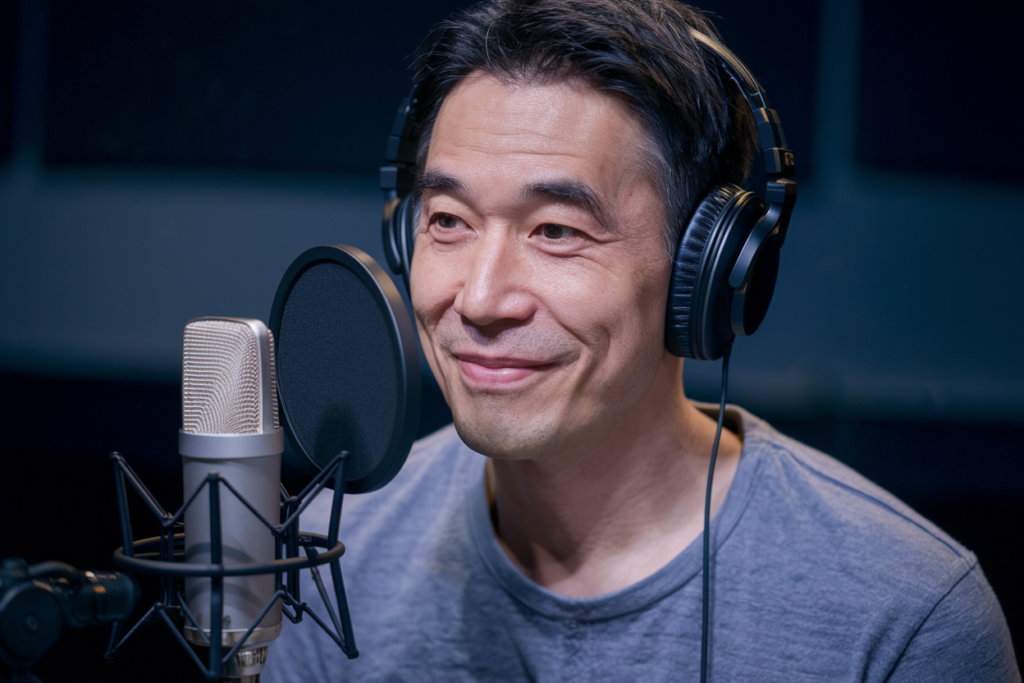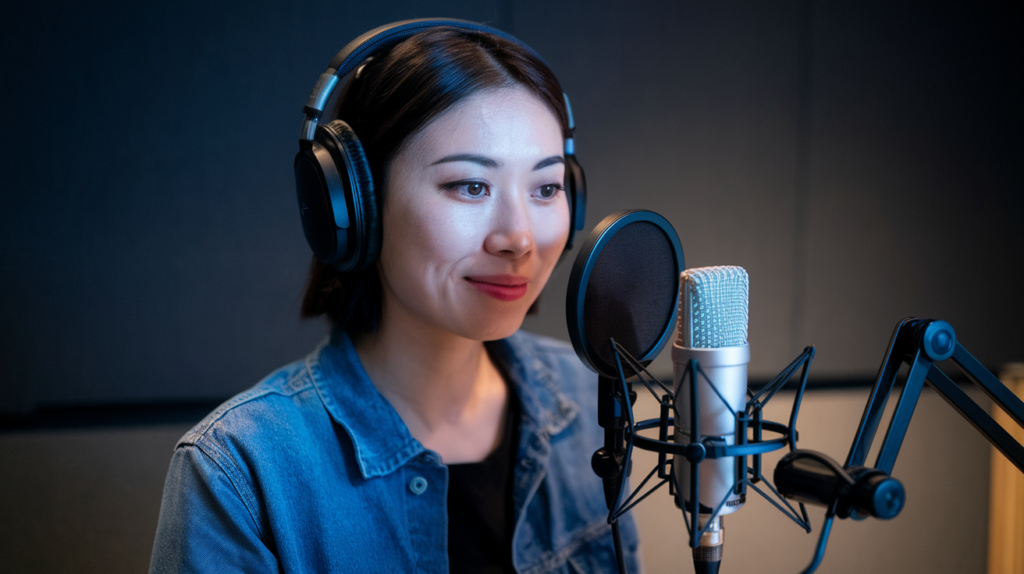Key Takeaways
- Cultural Nuances Matter: Successful localization of Japanese voiceovers requires an understanding of cultural references and context to resonate with different audiences.
- Language Structure Differences: The structural differences between Japanese and English impact dialogue pacing and emotional delivery, necessitating skilled voice actors adept in both languages.
- Technical Constraints: Audio length and sound quality standards are critical factors in localization, demanding creativity from voice artists to maintain clarity while fitting specific timing requirements.
- Audience Engagement is Key: Effective localization enhances viewer connection to characters, directly influencing retention rates; poor execution can lead to disengagement.
- Collaboration with Native Speakers: Working alongside native speakers enriches translations by providing insights into regional dialects and cultural nuances vital for authentic performances.
- Utilizing Technology Wisely: Integrating AI-driven tools and advanced recording software can streamline the localization process while ensuring that emotional depth and authenticity are preserved.
Ever wondered why Japanese voiceovers often miss the mark in localization? You’re not alone. The challenges of adapting these performances for different cultures go beyond just translating words. It’s about capturing emotions, nuances, and cultural references that resonate with audiences.
Overview of Japanese Voiceovers
Japanese voiceovers play a crucial role in conveying stories and emotions across various media, from anime to video games. The unique characteristics of the language make it essential for voice artists to capture not just the words but also the subtleties that give life to characters.
Voice talent in Japan often undergoes rigorous training, focusing on techniques that enhance their ability to express a wide range of emotions. This training equips voice actors with the skills needed to deliver performances that resonate deeply with audiences. For instance, a seasoned voice over artist can switch between tones seamlessly, adapting their delivery based on character nuances.
Cultural references add another layer of complexity to Japanese voiceovers. You can’t merely translate dialogue; you need to understand cultural contexts and how they influence perceptions. A phrase loaded with meaning might require creative adaptation when localized for Western audiences.
Working with experienced voice over talent ensures that these intricacies are handled effectively. They possess an innate understanding of both languages and cultures, allowing them to bridge gaps while keeping the original essence intact. When considering localization projects, selecting a skilled voice actor who appreciates these challenges makes all the difference.
Ultimately, investing time in choosing the right voice over artist pays off by enhancing audience engagement and satisfaction. Their expertise not only brings scripts alive but also fosters connections that transcend language barriers.
Challenges in Localization
Localizing Japanese voiceovers presents unique challenges that go beyond simple translation. You must consider cultural nuances, language differences, and technical constraints to ensure the final product resonates with your audience.
Cultural Nuances
Cultural context plays a pivotal role in localization. Japanese media often contains references that may not translate directly into English or other languages. These references can include traditional customs, pop culture elements, and social dynamics. Successful voice artists understand these subtleties and adapt their performances accordingly. For instance, a humorous line in Japanese might require restructuring to maintain its impact in another language while still reflecting the original spirit of the content. Your chosen voice talent needs to capture these cultural nuances effectively to engage audiences authentically.
Language Differences
Language structure varies significantly between Japanese and English. Japanese relies heavily on context, while English typically follows a more linear format. This difference impacts dialogue pacing and character emotion delivery during voiceover sessions. Additionally, certain expressions or idioms don’t have direct equivalents in English, requiring voice actors to convey meaning through tone or delivery rather than words alone. You should prioritize working with voice over talent who are not only skilled linguists but also adept at conveying emotion without losing authenticity.
Technical Constraints
Technical aspects can complicate the localization process as well. Audio length is often a critical factor; for example, localized scripts must fit within specific time frames to match lip movements or scene transitions accurately. This constraint demands creativity from your voice over artist as they adjust phrasing and delivery speed while maintaining clarity and emotional depth. Furthermore, sound quality standards vary across regions; you’ll want talented professionals familiar with these requirements to ensure an optimal listening experience for your audience.
Navigating these challenges requires expertise from experienced professionals who understand both the art of performance and the intricacies of localization. By investing in skilled voice actors capable of addressing cultural nuances, language differences, and technical constraints effectively, you enhance audience engagement across diverse markets.
Impact on Audience Engagement
Localization challenges in Japanese voiceovers directly affect audience engagement. When viewers connect with characters, they invest emotionally in the story. Effective localization captures not just the dialogue but also the essence of the original performance.
Viewer Expectations
Audiences expect accurate and relatable portrayals from voice actors. They want to hear performances that resonate with their cultural experiences. If a character’s emotions feel flat due to poor localization, viewers may disengage. Skilled voice over talent understands these nuances and adapts their delivery accordingly, ensuring that emotional depth aligns with viewer expectations across different cultures.
Retention Rates
Retention rates can suffer when localization doesn’t meet audience standards. Viewers are more likely to abandon content if they sense a disconnect between visuals and audio. High-quality voiceovers that convey emotion enhance retention, keeping audiences engaged longer. By investing in experienced voice artists who grasp both linguistic subtleties and emotional expression, you boost your chances of retaining viewers’ attention throughout your content’s duration.
Strategies for Effective Localization
Effective localization of Japanese voiceovers demands strategic approaches. Understanding cultural nuances and emotional expressions enhances the overall impact of your localized content.
Collaborating with Native Speakers
Working closely with native speakers proves invaluable in the localization process. These individuals bring deep cultural insights that enrich the translation, ensuring your message resonates authentically. When you engage native speakers, they can guide voice actors on regional dialects, idiomatic expressions, and subtle cultural references. This collaboration helps bridge gaps between languages, ensuring that character emotions translate effectively. Utilizing their expertise enables you to align voiceovers with audience expectations, fostering a stronger connection between viewers and characters.
Utilizing Technology
Leveraging technology streamlines the localization process while enhancing quality. Tools like AI-driven translation software can support initial translations but require human oversight for accuracy and emotional depth. Voice recording software offers features to adjust pacing and tone, allowing voice artists to match the original performance’s essence more closely. Additionally, sound editing tools facilitate fine-tuning audio quality to meet industry standards. By integrating technology into your workflow, you create a more efficient process without sacrificing authenticity or emotional engagement in your localized voiceover projects.
Incorporating these strategies ensures that your localized Japanese voiceovers maintain the integrity of the original content while appealing to diverse audiences effectively.
Conclusion
Navigating the challenges of localizing Japanese voiceovers requires a blend of linguistic skill and cultural understanding. It’s not just about translating words but capturing the essence of emotions and character nuances. When you invest in skilled voice talent who can navigate these complexities, you’re setting your project up for success.
The right localization enhances audience engagement and keeps viewers emotionally connected to the story. By prioritizing quality over speed and utilizing advanced technology alongside native insights, you can achieve a final product that resonates deeply with diverse audiences. Ultimately, effective localization preserves the original spirit while making it relatable, ensuring your content shines on a global stage.
Frequently Asked Questions
What is the main focus of the article on Japanese voiceovers?
The article focuses on the complexities of localizing Japanese voiceovers, highlighting that it’s more than just translation. It discusses how emotions, cultural references, and language nuances play a crucial role in making the content relatable to diverse audiences.
Why is cultural context important in Japanese voiceover localization?
Cultural context is essential because many Japanese media references do not translate directly into English. Understanding these nuances helps voice artists restructure lines while maintaining their emotional impact for effective audience engagement.
How does language difference affect Japanese to English localization?
Significant differences between Japanese and English influence dialogue pacing and emotional delivery. Voice actors must navigate these variations to ensure that character emotions are conveyed authentically and resonate with viewers.
What training do Japanese voice talents undergo?
Japanese voice talents typically receive rigorous training focused on expressing a wide range of emotions. This training helps them adapt their delivery based on character nuances, enhancing the overall quality of localized performances.
How can technology aid in the localization process for voiceovers?
Technology plays a vital role by providing AI-driven translation tools and advanced recording software. These tools help streamline the localization process while ensuring high-quality audio that maintains authenticity in character portrayals.
What strategies can improve effective localization of Japanese voiceovers?
Key strategies include collaborating with native speakers for cultural insights, understanding regional dialects, and effectively capturing emotional expressions. These approaches enhance character relatability and audience connection through accurate portrayals.
Why do audiences disengage from poorly localized content?
Audiences may disengage if characters’ emotions feel flat due to poor localization. Effective performance captures both dialogue and essence; without this depth, viewers struggle to connect emotionally with the story or characters presented.
How does investing in experienced voice artists benefit localization projects?
Investing in skilled voice artists who understand linguistic subtleties enhances emotional expression and increases viewer retention rates. Their expertise ensures that localized performances resonate well with audiences, leading to greater engagement throughout the content.







